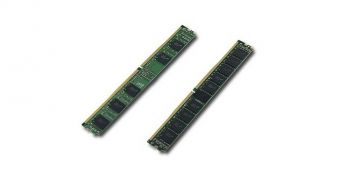DDR4 memory may not be something that normal consumers can really use for anything, since there are no motherboards or CPUs with support for it, but things are different on the server front, so Virtium launched some DDR4 modules.
The company isn't the first provider of DDR4 RAM, but it is among the early ones, so it should be able to ride out the momentum of the new market.
Right now, only engineering samples are available, but even those should be able to secure Virtium some contracts.
For those who want an elaboration, engineering samples of a product are used by prospective customers in their tests and design experiments.
So, you could say that the DDR4 modules form Virtium are, or will be, used by various companies to see how best to design a server or industrial system with them.
Commercial applications probably won't crop up before the later part of the year, or maybe 2015, but sample shipments are already underway.
Spec-wise, the Virtium DDR4 memory modules have power savings of 40% compared to DDR3 of similar capacity.
Speaking of which, the newcomers are offered in 4 GB, 8 GB, and 16 GB versions. The reason they use so little energy, in comparison, is the improved power specification.
DDR3 normally operates at 1.5V, but while there are low-voltage ones at 1.35V, there are 1.65V modules as well.
DDR4 works at 1.2V and may show up in lower-voltage iterations later down the line as well. No wonder everyone is looking forward to it.
On that note, the performance of the Virtium DDR4 memory is 1,866 MHz, or 1,866 MT/s (megatexels per second).
For comparison, DDR3 has a normal performance of 1,333 MHz but comes in 1,066 MHz and 1,600 MHz as well. True, there are high-end modules in over 2.5 GHz, but that's because of overclocking (which will be applied to DDR4 eventually too). Virtium's new DDR4 modules are of the lower profile ULP RDIMM form factor.
"Virtium's extensive expertise in both advanced memory technologies and embedded systems applications allows us to help our customers understand, migrate and leverage the advantages of DDR4 while collaborating with them in overcoming any design and verification challenges," said Phan Hoang, vice president of research and development at Virtium.
"Because of our sole focus on the industrial embedded market and that our customers are now doing a majority of their design work around DDR4, Virtium will fully support future proprietary FBGA and Intel-based chipset systems with a comprehensive DDR4 roadmap of memory module form factors."

 14 DAY TRIAL //
14 DAY TRIAL //